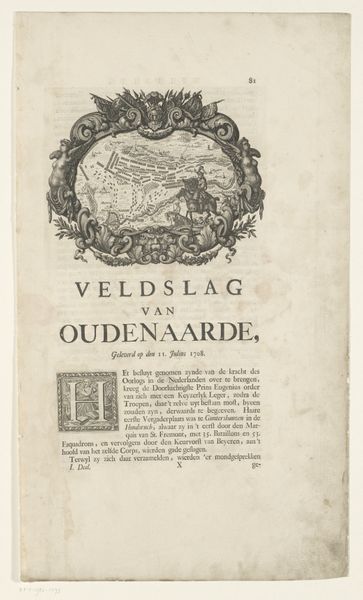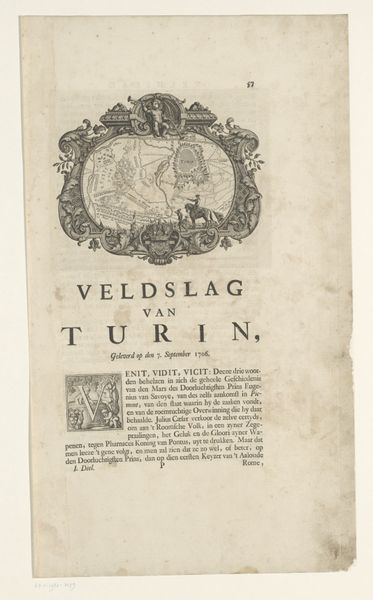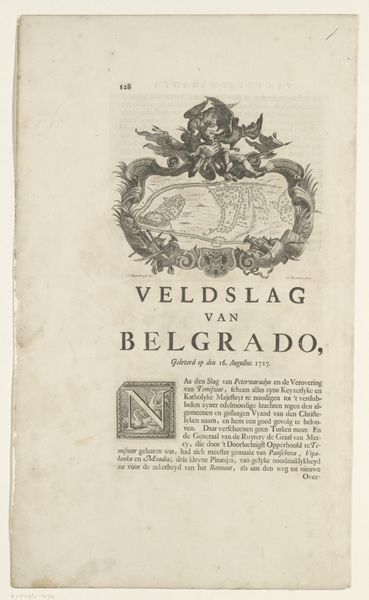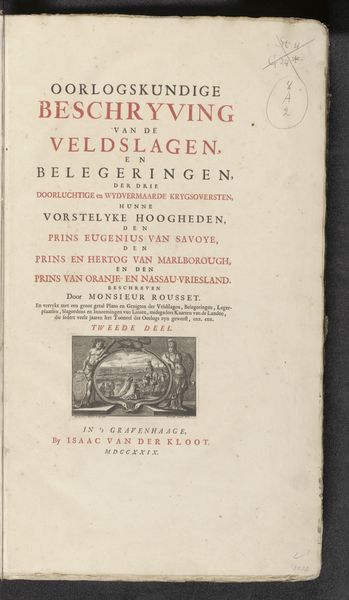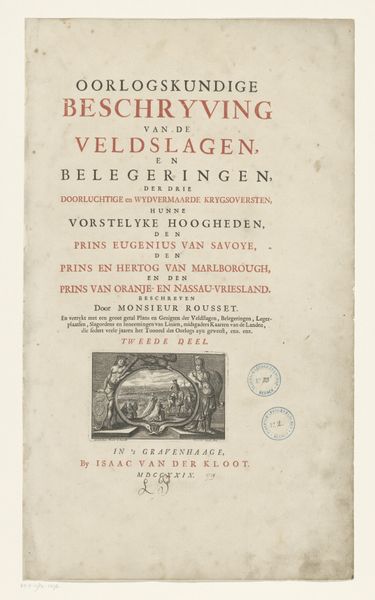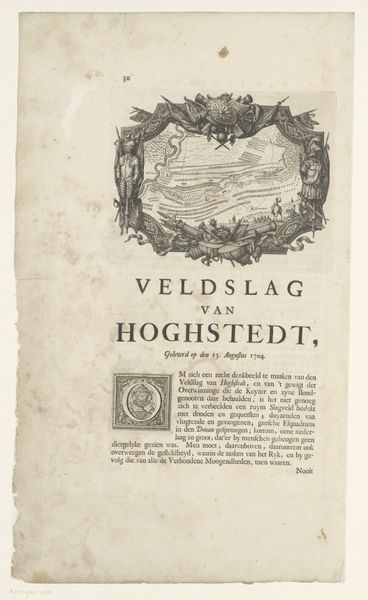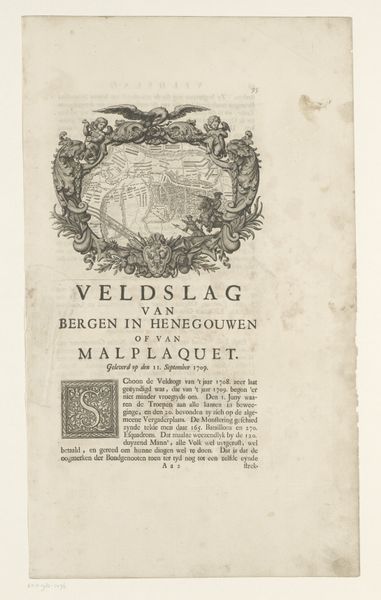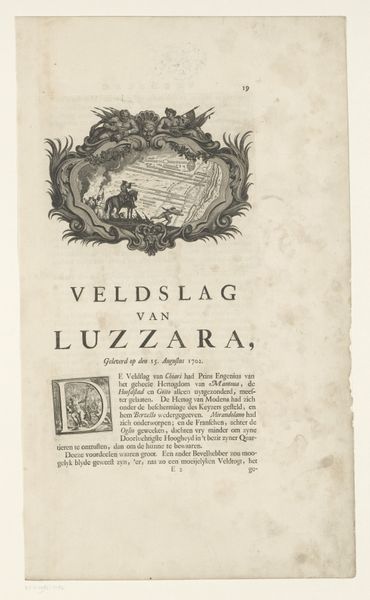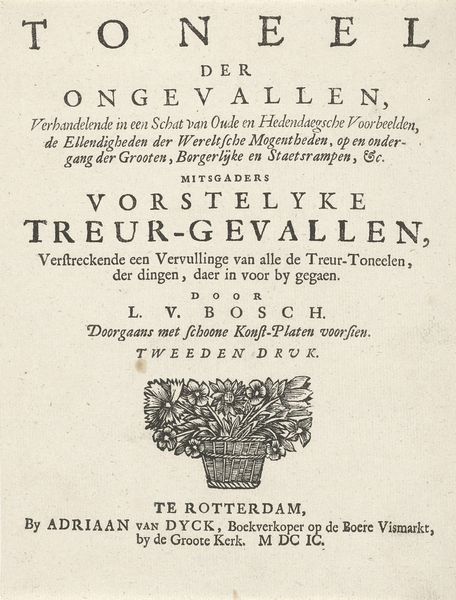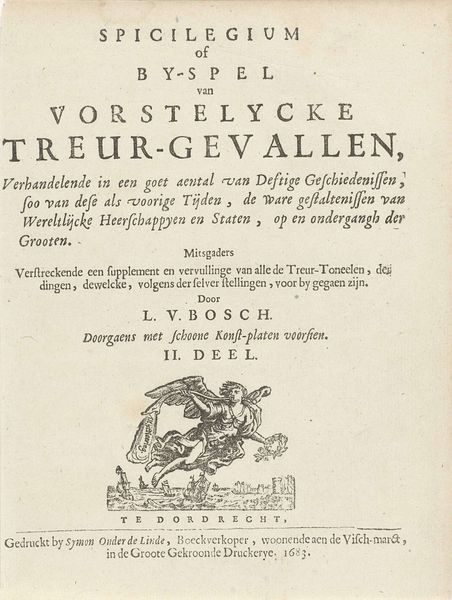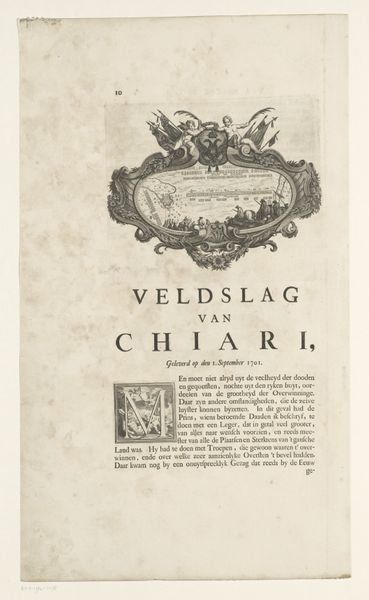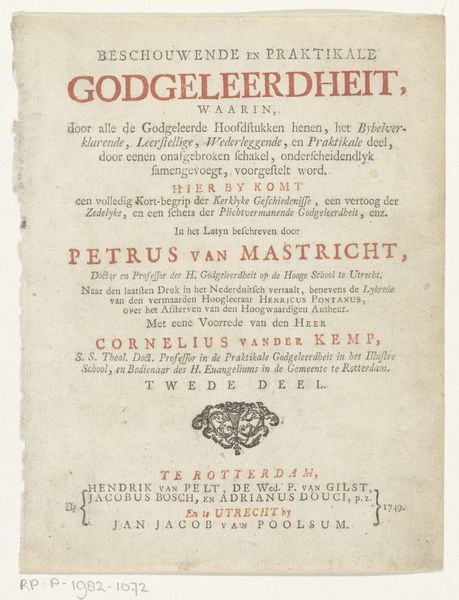
print, engraving
#
baroque
# print
#
cityscape
#
history-painting
#
engraving
Dimensions: height 170 mm, width 202 mm, height 521 mm, width 307 mm
Copyright: Rijks Museum: Open Domain
Curator: Here we have Jan Wandelaar’s engraving from 1729, titled "Veldslag van Peterwaradijn (4 aug. 1716)", which translates to “Battle of Peterwardein.” It commemorates a historical event. Editor: It has a definite propagandistic tone. Looking at this scene, I see chaos meticulously rendered in miniature, the battle unfolding in what feels like a contained, almost sanitized space, lacking a sense of the raw human suffering inherent in such conflicts. Curator: Indeed, the artist’s treatment is characteristic of the Baroque era’s fascination with grandeur and symbolic order, even when representing conflict. Notice the ornate wreath-like frame encompassing the aerial view of the battlefield, replete with military symbols. Editor: Absolutely, I find this "sanitized" version problematic because it disconnects the audience from the visceral realities of war. Instead of evoking empathy, the stylized chaos could glorify violence, masking the power dynamics at play and the profound impact of such events on marginalized populations. It becomes a spectacle. Curator: The print presents the battle as a strategic map and a grand design; it does evoke a specific response, aiming to stir a sense of patriotic pride in the viewer by showcasing a triumphant moment. It is about power, but it is also about shared cultural identity. Editor: But I feel it flattens a complex and violent period into a neatly packaged and easily digestible narrative, that risks obscuring the lived experiences of all individuals, regardless of class, caught in the crossfire of the battle and its consequences. Curator: That's certainly a valid perspective for contemporary viewers. In many ways, understanding these artistic depictions also reveals the evolving cultural and societal norms regarding representations of conflict. What we see as a gloss today, in the 18th century served as an acceptable heroic interpretation of violent struggles. Editor: So, by decoding Wandelaar’s approach, we unravel how dominant narratives surrounding historical events were constructed and reinforced, acknowledging diverse interpretations that are equally crucial for a holistic understanding of the past. Curator: Precisely, art enables the present to meaningfully reflect on the past. Editor: An important conversation.
Comments
No comments
Be the first to comment and join the conversation on the ultimate creative platform.
